Death Stranding 2: On the Beach review for PS5

Platform: PS5
Publisher: Sony Interactive Entertainment
Developer: Kojima Productions
Medium: Digital/Physical
Players: 1
Online: Leaderboards
ESRB: M
When I reviewed the original Death Stranding back in 2019, I gave it a 10/10 and called it “the definitive Hideo Kojima experience and a genuine, one-of-a-kind gaming experience.” Six years later, Kojima came along and made me a liar because Death Stranding 2: On the Beach is the definitive Hideo Kojima experience and a genuine, one-of-a-kind gaming experience.
On the Beach picks up shortly after the end of the first game, with Sam living a semi-reclusive life with Lou in his own bunker. The game tasks you with connecting Mexico to the Chiral Network, which Sam begrudgingly agrees to, and then you’re off to the races. From the UCA to Mexico to Australia, Death Stranding 2 is a world-hopping adventure. If you had trouble with the opening hour of the first game, but eventually fell in love with it, On the Beach will have you hooked almost immediately. The adjustments to quality of life within this sequel are impossible to overstate. Vehicles are available almost immediately, taking a lot of the more tedious aspects of early-game deliveries and rendering them moot.
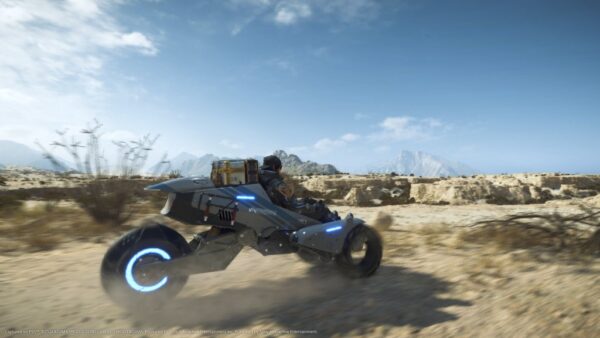

In addition to the early introduction of vehicles, the expansion of the Chiral Network has also led to an expansion in the available infrastructure. Roads are more efficient and available sooner, there are multiple versions of a fast travel system, each with their own “best time” to use them, and there is a monorail system that you can build that allows for the quick transport of vehicles, cargo, and yourself. These adjustments take nothing away from the core package delivery experience, and the option to simply walk your cargo from place to place for every mission is still there, but not being forced to do so is a most welcome change.
That shift towards more convenience is apparent in the combat, too, which is greatly expanded upon here. Where combat felt like a side-note in Death Stranding, it feels like a core piece of the experience in On the Beach. A greatly expanded arsenal, along with dozens of “bases” and areas full of armed enemies make sure that there is plenty of fighting to be done, if you want. As with everything else, you can choose to simply sneak through hostile areas, or hop in your truck and drive right through while ignoring all of the enemies, so players who simply want to deliver packages with as little combat as possible are able to do so. Suppressed rifles, machine guns, machine pistols, a tranq sniper rifle, a blood boomerang, all glorious combat toys in the Kojima sandbox, and all a lot of fun to use. After spending decades sneaking around in Metal Gear Solid, I thoroughly enjoyed driving my truck with machine gun auto turrets straight into the enemy base, crushing a few guys beneath my wheels, then bailing out and mowing the rest down with an auto-shotgun.
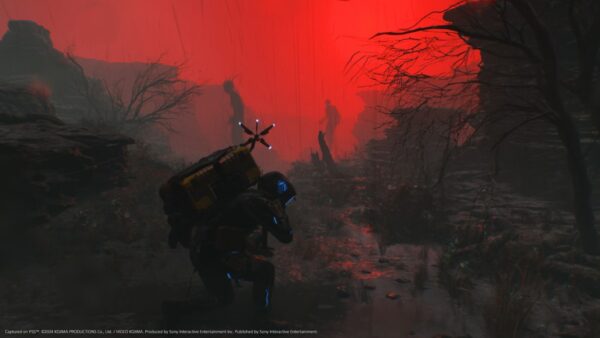

If you found the story to be a bit too obtuse or weird the first time around, I have some good news and some bad news. Bad news, On the Beach is WEIRD weird. All of the strange “Kojima-isms” are on full display here, with yet another dictionary of absurd sci-fi terms thrown at you every three minutes. Your frustration might be tempered, however, with the robust codex available to you from the beginning. Every time a character mentions a new word or event that occurred, the codex pops up and tells you that you can read more about it within. This is great for lore-heads and for people who would like a little more context with their story. I feel the game still does a fine job of explaining the important bits without any further reading, but if you are confused or simply want more information, the tool is there for you.
Sam is much more “upgradeable” this time around, too. While never feeling like it veers into RPG territory, there are distinct upgrade trees that you can choose to invest in as you play, with more upgrades coming available as you progress based on the style that you choose to play with. I went with a more run-and-gun approach to everything, so the upgrades that presented themselves to me were more in line with that. Every upgrade is a nice touch, but none of them feel necessary. I enjoyed having quite a few of them, specifically the one that allowed for more strand items to appear in my world from other players, making traversal just that much easier.
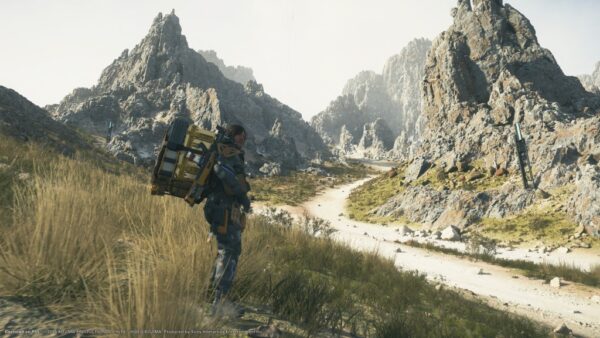

Death Stranding is famously dense, thematically, and On the Beach is no exception. Climate change, social media, AI, death of the author, the American obsession with firearms, women’s reproductive rights, the afterlife, religion, on and on the list of potential themes goes. Each thing can be seen as much as you would like in the story, or as little as you would like in the story, depending on just how interested in seeing them you are. This is a massive credit to the entire team at Kojima Productions, who crafted an excellent story that says so many things without losing the fictional plot it is attached to.
Visually, Death Stranding 2 is the most gorgeous, photo-realistic game I have ever seen. There are so many different art styles available in games, and to claim that one specific style is the “best” is simply wrong, but within this specific graphics style, On the Beach is certainly the very best. I had a bit of an issue with the uncanny valley when a very famous person would appear on screen and speak to me in a voice very clearly not their own, which happens way more often in this than it did in the first game. This is a minor complaint, but the constant parade of “famous people that Kojima knows” grew tiresome over the hours.
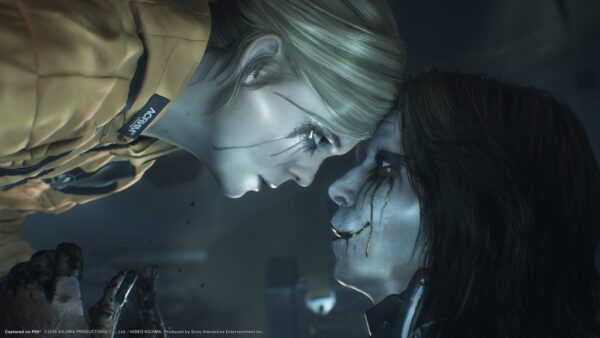

Speaking of hours, expect to put quite a few of them into Death Stranding 2. I would say something around 50 hours if you play the main story while tackling any side-quests that interest you, exploring the areas that catch your eye, and generally not rushing through things. Completionists will easily hit 100+ hours, while folks rushing through the main story might clear it in 30-40? I don’t recommend rushing though, as the side quests typically add rich backstory to some of the minor characters or include bits of lore and interactions that are well worth your time. Increasing your standing with each quest-giver also unlocks more tools, weapons, and upgrades that make the main story that much better to play through.
I have been incredibly light on story details here, and for good reason. This is another game where you should go in as blind as possible and experience each and every story beat for yourself. Death Stranding 2: On the Beach feels like the game Kojima set out to make with the original, but hadn’t quite nailed the formula yet. In some ways, this feels like a Metal Gear Solid game as much as a Death Stranding one. There are stand-ins for Snake, Raiden, and even a giant vehicle that I challenge you to call anything BUT a Metal Gear as you play.
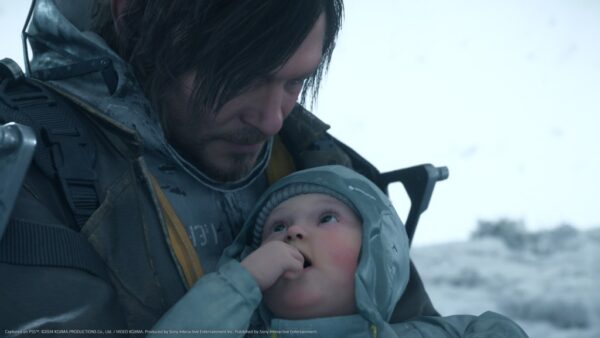

If you enjoyed Death Stranding, you will almost certainly love Death Stranding 2. If you bounced off of the first game for any reason, it has most likely been changed for the better in On the Beach, and you may very well find yourself enjoying it this time around. I am looking forward to continuing to play throughout the coming months, wrapping up the side missions and helping other people build their roads across Australia. Death Stranding 2 asks, “Should we have connected?” My answer is a resounding “Yes”
Note: Sony Interactive Entertainment provided us with a Death Stranding 2: On the Beach PS5 code for review purposes.
Score: 10












